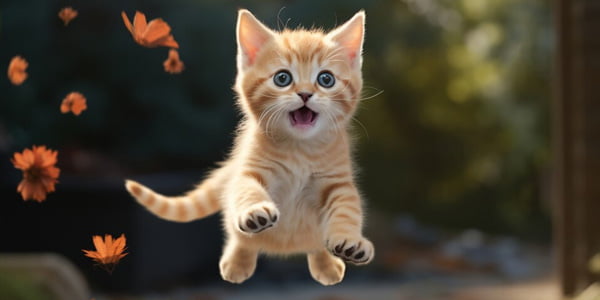Feline calicivirus is a highly contagious virus that causes a mild to severe respiratory infection and oral disease in cats. It is especially common in shelters and breeding colonies, and often infects young cats. Most cats recover completely after a calicivirus infection, but rare strains can be especially deadly ¹.
Cats typically catch FCV after coming into contact with other infected cats. Calicivirus is resistant to some disinfectants, so cats can come into contact with the virus in almost any environment. Cats without vaccinations are at higher risk, as are those with a lower immune system due to pre-existing infections or diseases ². After being exposed to FCV, the incubation period is two to 14 days before symptoms appear.
The virus likely initially infects the lining of the back of the mouth. After the virus replicates there, it likely spreads through the bloodstream to other organs. However, FCV preferentially infects the lining of the mouth and the tissues within the lungs ¹³.
This is our product for detecting feline calicivirus,
https://www.ringbio.com/products/pet/feline-calicivirus-fcv-ag-rapid-test-kit
https://www.ringbio.com/products/pet/feline-calicivirus-igg-antibody-elisa-kit
Source:
(1) Feline Calicivirus | Cornell University College of Veterinary …. https://www.vet.cornell.edu/departments-centers-and-institutes/baker-institute/our-research/feline-calicivirus.
(2) How to spot if your cat has calicivirus (FCV) | Woodgreen. https://woodgreen.org.uk/pet-advice/cat/how-to-spot-if-your-cat-has-calicivirus/.
(3) Feline Calicivirus Infection | VCA Animal Hospitals. https://vcahospitals.com/know-your-pet/feline-calicivirus-infection.
(4) Feline Calicivirus: Signs of Infection and Causes of Limping in …. https://www.petplace.com/article/cats/pet-health/limping-calicivirus-cats.
(5) Calicivirus in Cats: Causes, Symptoms, & Treatment – Cats.com. https://cats.com/calicivirus-in-cats.
(6) en.wikipedia.org. https://en.wikipedia.org/wiki/Feline_calicivirus.

